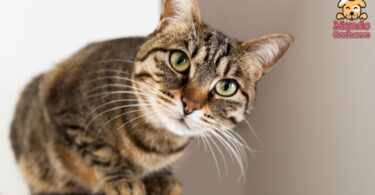Cats are fascinating and often enigmatic animals. Their behaviors and reactions can seem unpredictable, especially when it comes to their relationship with humans. Many people have found themselves in situations where a cat seems to reject them for no apparent reason, while others are greeted with purrs and affection. Why does this happen? Next, we will explore the possible reasons why cats reject some people on occasion.
Indice
Why they reject certain people
Cats are naturally territorial and tend to protect their space. When a new person enters its territory, the cat may feel threatened or uncomfortable. This behavior is especially common in cats that are not accustomed to the presence of strangers or have had negative experiences with strangers.
In addition, each cat has its own personality. Some are naturally more shy or reserved, while others are sociable and outgoing. Shy cats may need more time to adjust to new people, and may reject someone who tries to approach too quickly.
Another reason why kittens reject people may be sensitivity to body language. This is because cats are extremely sensitive to body language. They can perceive and react to the subtle signals that people emit. A tense body posture, sudden movements or direct looks can be interpreted as threats by cats. People who are more relaxed and move in a slow, calm manner tend to be more accepted by cats.
Cats can also pick up on people’s energy and emotional state. A person who is anxious, nervous or agitated may be repelled by a cat, as these states may convey insecurity or threat. Conversely, a calm and confident person may be seen as less intimidating and more friendly.
Previous experiences
Cats have a good memory and can recall negative experiences with certain people. If a cat has had a bad experience with someone who has certain physical characteristics (such as height, gender, tone of voice), it may generalize that experience and show rejection toward others with similar characteristics.
Another very influential factor in the rejection of some people is early socialization. In fact, early socialization plays a crucial role in how cats interact with humans. Cats that have not been exposed to a variety of people and situations during their first few weeks of life may be more likely to reject new people. On the other hand, well-socialized cats tend to be more open and trusting with strangers.
Smells and sounds
Cats have a highly developed sense of smell and can be very sensitive to odors. Strong perfumes, cleaning products, or even the odor of other animals can be unpleasant or threatening to cats. A person who uses products with strong odors may be rejected by a cat because of this olfactory sensitivity.
In addition to odors, cats are also sensitive to sounds. Loud voices, loud laughter or unexpected noises can frighten cats. People who speak in low, calm tones are more likely to be accepted by cats.
Cats reject behaviors
A person’s intentions when approaching a cat can influence the animal’s reaction. Rapid or forced approaches may cause a cat to feel trapped or threatened. Cats prefer to be in control of the interaction and feel safe. Allowing the cat to approach on its own is a more effective strategy to gain its trust.
Many times, humans do not recognize or ignore the signals cats send when they are uncomfortable. A cat may show signs of stress or displeasure, such as wagging its tail rapidly, flattening its ears, or turning away. Ignoring these signals and continuing to try to interact can lead to rejection by the cat.
The reason a cat may reject certain people is multifaceted and depends on a combination of factors. The cat’s territorial nature, its sensitivity to body language and people’s energy, its previous experiences, and its sensitivity to smells and sounds play an important role in its reactions. Understanding these aspects and learning to respect cats’ space and signals can help improve interactions with them. With patience and understanding, it is possible to gain the trust and affection of these fascinating animals.
Image courtesy of https://pixabay.com, all rights reserved.







